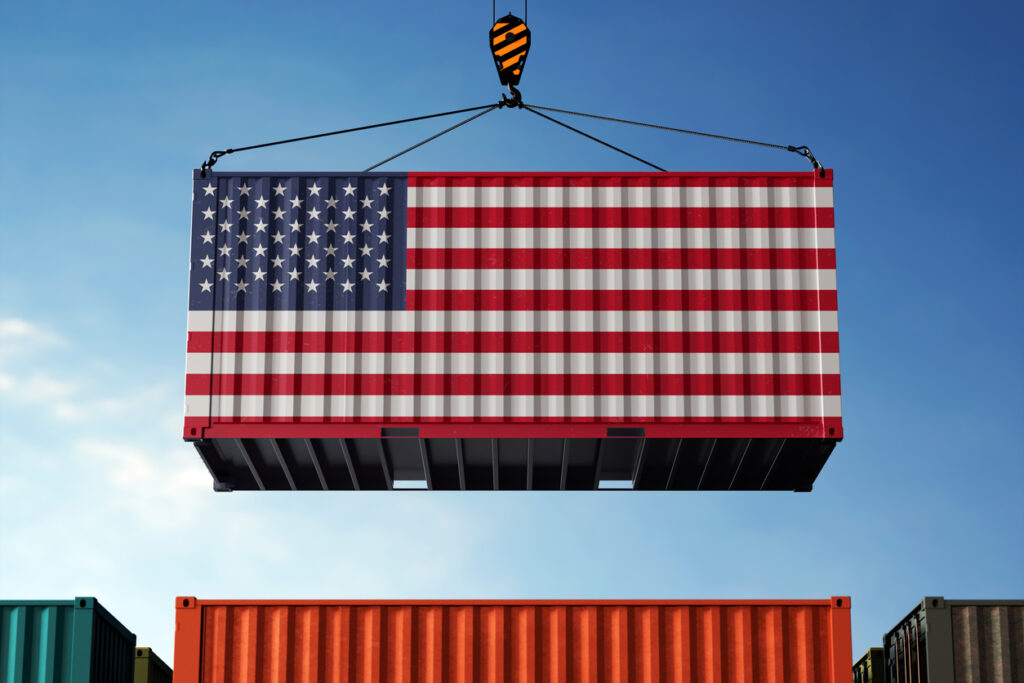
Tariff Update: Liberation Day and the Cratering of the Global Economy
Sunday morning, April 6th, [updated April 7th]. I have to note when I write this because by the time you read this, things may have changed once again. It’s been quite a tumultuous past few days.
Yesterday, millions of people took to the streets across the country in over 1,400 “Hands Off” protests against Donald Trump and Elon Musk’s policies and intrusions throughout the federal government, our economy, and our culture. But I digress.
It was just last Wednesday, April 2nd (or “Liberation Day”) that Donald Trump announced another round of sweeping tariffs. Let’s focus on the facts:
- The Liberation Day tariff announcement was focused on a two step approach: a 10% baseline tariff on all imports from countries across the globe. This includes a few uninhabited islands. Evidently we’re being ripped off by penguins… This 10% tariff went into effect on all imported goods as of this past Saturday, April 5th.
- In addition, roughly 60 countries were singled out for additional “reciprocal” tariffs. These countries are being represented as the “worst offenders” in terms of their trade practices on American goods exported to their countries. Those additional tariffs ranged dramatically, from 10% – 49%. An additional 34% tariff applies on all imports of products produced in China. For all products imported from Vietnam, that reciprocal tariff rate is 46%. These tariffs take effect as of this coming Wednesday, April 9th.
- The actual calculation of the total tariff rate on the value of an imported product is currently a bit difficult to determine at the moment. The tariff rates are “stacked” on each other. For example, you may recall that Trump announced a 10% tariff on China imports on February 4th. Then, on March 4th another 10% was announced, for a total of 20% charged on the value of the goods being imported (writing this I had a nostalgic moment reflecting back on the “good ‘ole days” of just 20% tariffs- that was a week ago). Now, the reciprocal 34% gets added on. So we’re up to 54% currently.
- But wait- it gets even more complicated. Back in 2018 Trump levied “Section 301” tariffs of 25% on certain categories of products and materials from China. In some cases that tariff needs to be added to the 54%.
- And let’s not forget that pesky 25% global tariff on imported aluminum and steel. Products containing those materials are subject to this additional tariff as well.
- Also, a 25% tariff on the value of automobiles manufactured outside of the United States has gone into effect.
- Trump has also stated that more tariffs may still be announced on semiconductors, pharmaceuticals, and
The net result of that announcement has been historic, but not in a good way. The fallout has been swift and financially devastating. On Thursday, the financial markets plummeted. Nevertheless, Trump and his advisors shrugged off the market turmoil and predicted that stocks would eventually rebound. “The markets are going to boom”. Trump said. “The country is going to boom”. That doesn’t feel all that reassuring, but what do I know…
On Friday however, they fell even further on news that China was instituting its own 34% tariff on imported American products. So it looks like we’re in a full blown trade war folks. Buckle up.
In total, the Dow Jones Industrial Average and S&P 500 slid 7.9% and 9.1% respectively, causing investors to lose $6 trillion dollars. And by “investors”, I mean you and I. That’s money lost from all of our retirement accounts. If you haven’t looked at your account balance in the last few days, don’t…
During his announcement on Wednesday, Trump said the tariffs will eventually lower prices for Americans, an issue on which voters say they want him to focus. But economists are predicting instead that consumers and businesses will likely encounter higher inflation, with price hikes on everything from food imports like coffee and chocolate to iPhones and other electronics manufactured outside the U.S.
“For all of President Trump’s talk of a new ‘golden age,’ this huge tax increase will inevitably result in higher prices for American families, lower growth and business investment, and diminished exports and manufacturing output as the country’s factories face retaliation abroad and costlier inputs (roughly half of all imports) at home,” said Scott Lincicome and Colin Grabow, trade experts at the Cato Institute, in an email.
They added, “With today’s announcement, U.S. tariffs will approach levels not seen since the Smoot-Hawley Tariff Act of 1930, which incited a global trade war and deepened the Great Depression.“
Over these last few days, some interesting facts have emerged:
- The Washington Port reported Friday, citing two sources who requested anonymity to discuss internal deliberations, that the final tariff rates Trump displayed on a chart he held up during the widely televised Rose Garden speech were set just three hours before the address.
- When Trump announced the “discounted” reciprocal tariffs he explained that the calculation of each country’s tariff rate was based on tariffs those countries imposed on the U.S. He went on to say that the administration then discounted that rate by 50% because he was being “kind”. However, this was quickly revealed to be false (the kindness part obviously, but also the part based on the discounting of the rate other countries charge). The formula that was used to arrive at each reciprocal rate was actually based on a calculation of the U.S.’s trade deficit with each country divided by that country’s exports to the U.S. But the plot thickens…
- Also on Friday, the conservative think tank American Enterprise Institute (AEI) issued a report that criticized the tariffs and said that the purported formula was incorrect. The analysis was titled “President Trump’s Tariff Formula Makes No Economic Sense. It’s Also Based on an Error”. The report’s authors wrote that the formula used to determine each country’s tariff rate on the U.S. “…makes an error that inflates the tariffs assumed to be levied by foreign countries four-fold”, causing the tariffs to be highly inflated. Ouch.
So, it would appear that the Liberation Day announcement has been a bit of a disaster, from numerous perspectives. And the impact on the economy, consumer buying trends, financial viability of large and small (but mostly small) businesses around the world, and people’s jobs is still to be determined.
On Saturday however, a Truth Social post by Trump stated “This is an economic revolution, and we will win. Hang tough, it won’t be easy but the end result will be historic”. Really?
But some good news- on Saturday, the White House announced “the President won his second round matchup of the Senior Club Championship today in Jupiter, FL, and advances to the Championship Round tomorrow”. Well isn’t that nice.
Monday, April 7th updates:
- Tony Romm, Economic Policy Reporter, New York Times: “President Trump on Monday issued China a new ultimatum: Rescind its retaliatory tariffs on the United States, or be subject to additional tariffs of 50 percent beginning Wednesday. The president said on Truth Social that he would also cease negotiations with China if it does not withdraw its plan to put a 34 percent tariff on U.S. goods.” Note: this would put the tariff rate at up to 104%.
- In a sign of investor frustration over the tariffs, an erroneous news report earlier in the day, suggesting that the president might pause his trade war, sparked an immediate rally — only to see stocks just as quickly plummet again, after the White House made clear no such pause was in the offing.
- Treasury Secretary Scott Bessent signaled in an interview this afternoon that Trump is ready to negotiate. “President Trump, as you know, is better than anyone at giving himself maximum leverage,” he said. Bessent said he had suggested that foreign officials “keep your cool, do not escalate and come to us with your offers.” He added: “And at a point, President Trump will be ready to negotiate.” These comments contradict an interview this morning by Peter Navarro, a White House trade adviser, who said there would be no negotiations.


